The shoes of horses and mules are generally made of wrought iron and are available in various sizes, keeping varying feet in view. These are symmetrical and interchangeable and not made especially for the right or left foot. Both branches of the shoe must be regarded as potentially inner ones; the nail holes are fine and less pitch is given to them at the quarters. Different types of horse shoes are used frequently horses to keep them working fit.
Common Types of Horse Shoes
As a horse caregiver, you must have a detailed idea about horseshoeing. Each horseshoe should conform precisely to its specification. The bearing surface- must be perfectly level or slightly seated in fore shoes and free from all irregularities, as bumps will burn their way in hot shoeing. Cold shoeing will prevent close apposition between shoe and foot. The most common types of horse shoes are discussed briefly below:
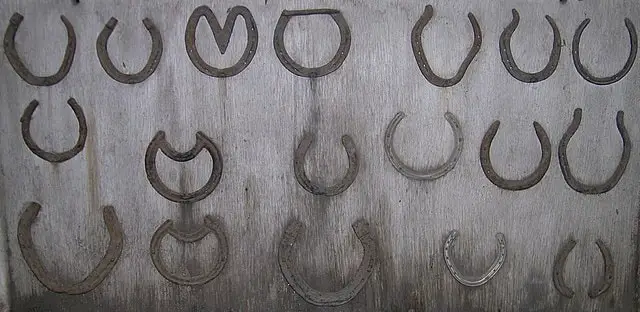
1. Plain Shoe
The plain shoes are plain on both surfaces, with one clip in the fore and two clips on the hind. Hind shoes may have calkins at the heels. They are manufactured in various sizes.
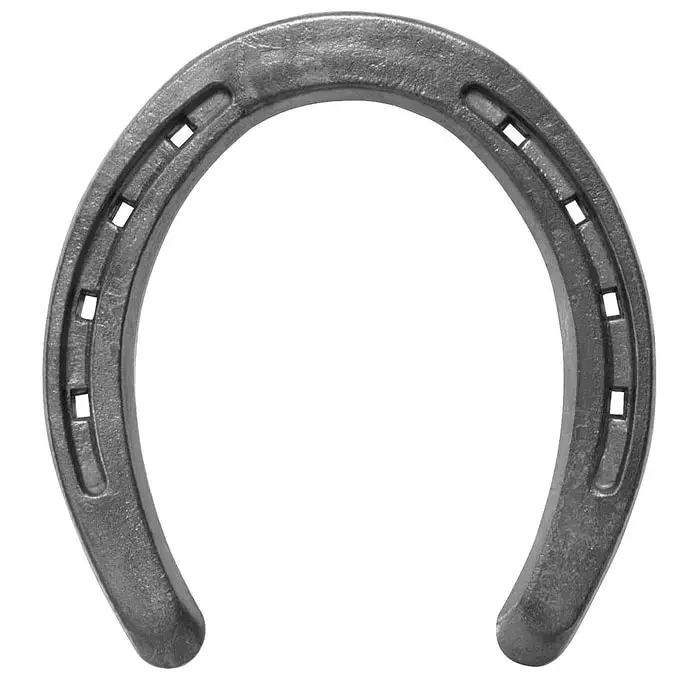
2. Seated Out Shoe
The bearing surface of the shoe touching the sole is hollowed out so that pressure is exerted on the wall only. Seated-out shoes are used in cases where the sole is flat and must not be pressed by the sole. It is used in bruised sole, a flat sole, burnt sole, and dropped sole.
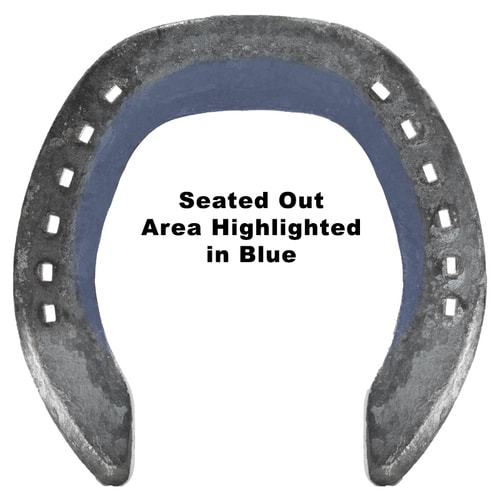
3. Types of Horse Shoes: Saucer Shoe
Saucer shoes are an extra-wide and seated web, valid for the dropped sole following chronic laminitis.
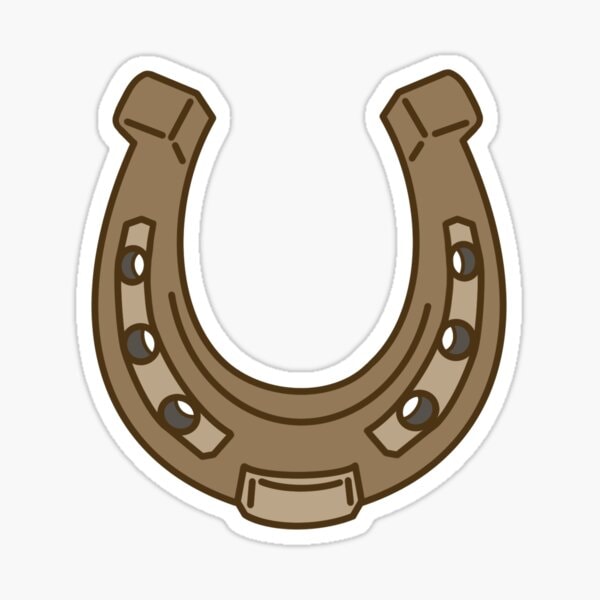
4. Fullered Shoe
Fullering is making a groove in the ground surface of the shoe, in which nail holes are placed. This shoe is used on racehorses and on the snow-covered ground to prevent feet from slipping. It is not good for holding nails and wears quicker as it is lighter in weight. Fullered shoes should be plain at the toe and heels.
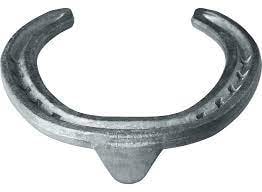
5. Types of Horse Shoes: Calkin Shoe
Calkin is a projection of the heel by turning down the heel at right angles. The projection is forced into the ground by the animal’s weight, giving a good grip. Calkin shoe is used in hind legs for draught horses, polo ponies, and animals working in hilly and snowy terrains.
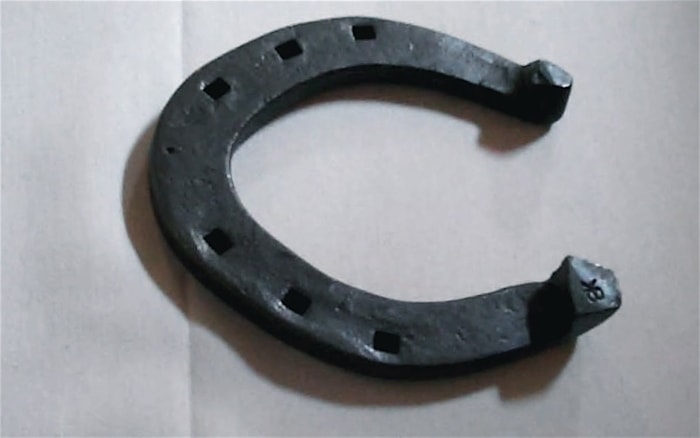
6. Wedge Heel Shoe
Wedged heel shoes are the shoes where the hells are narrowed and thickened. The shoes may be used in combination with calkin horseshoes. The shoes serve the same purpose as calkin shoes and lessen the chances of brushing.
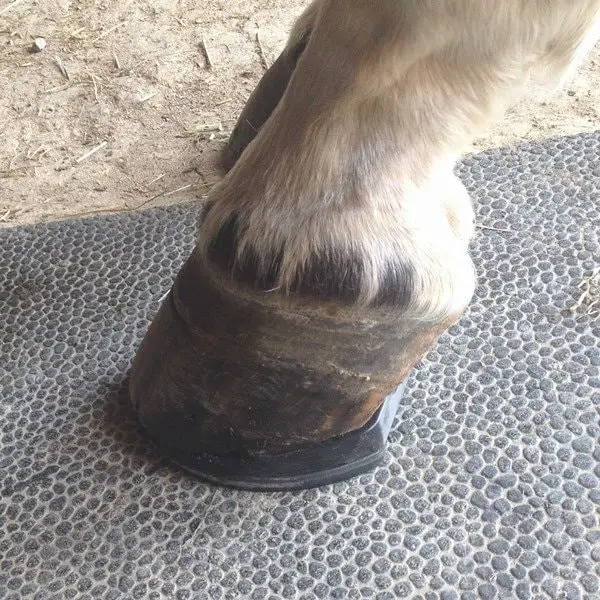
7. Concave Shoe
Concave horseshoes are the shoes the inner edge of the ground surface is rounded off—the reverse of “seated out shoe” in that the ground surface is narrower than the foot surface. The shoe is used for hunters and avoids ‘overreach.’ Concave shoes are lighter than ordinary shoes and not so likely to be sucked off in heavy going.
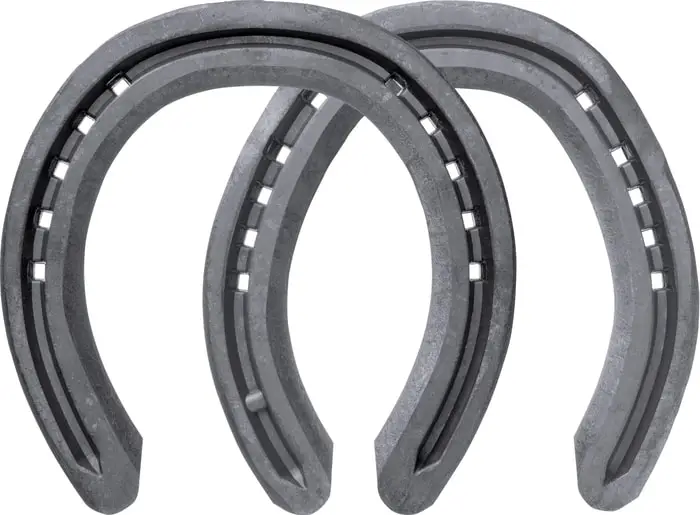
8. Knocked Up and Feather-edges Shoe
The inner branch of the shoe is considerably narrowed from the toe to heel and, at the same time, slopes inwards under the hoof. Knocked-up shoes are used for horses that have a brush in their hooves.
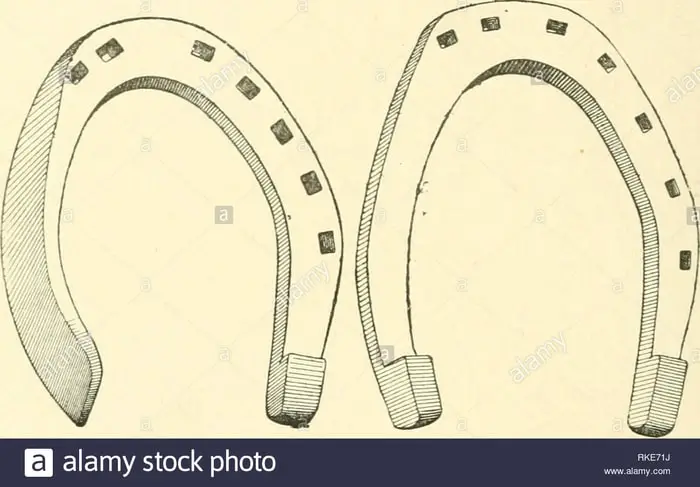
9. Three Quarter Shoe
Three quarter bar shoe is one from which an inch or two of the heel has been removed. The shoe is used to relieve pressure on corn, prevent brushing in ‘toe turn out horses, and in capped elbow cases. The haft of the branch of the shoe is usually removed from the shoe.
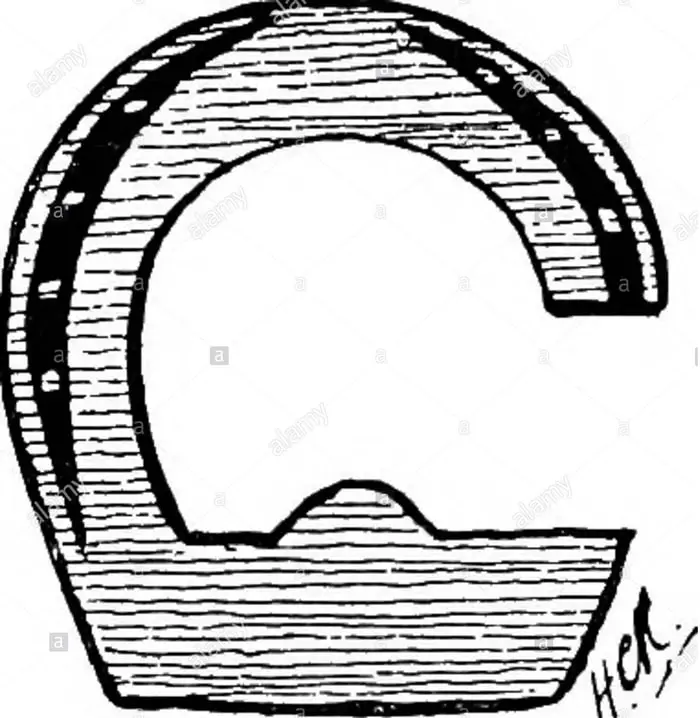
10. Bar Shoe
Bar shoes are the shoes where heels are joined together employing an iron plate of the same width. Bar shoes are used in all cases where the heels are contracted. The shoes may also be used for corn and weak heels not capable of bearing weight, side bone, and seedy toe. The shoe is most beneficial to ensure frog pressure in cases of atrophy of the structure.
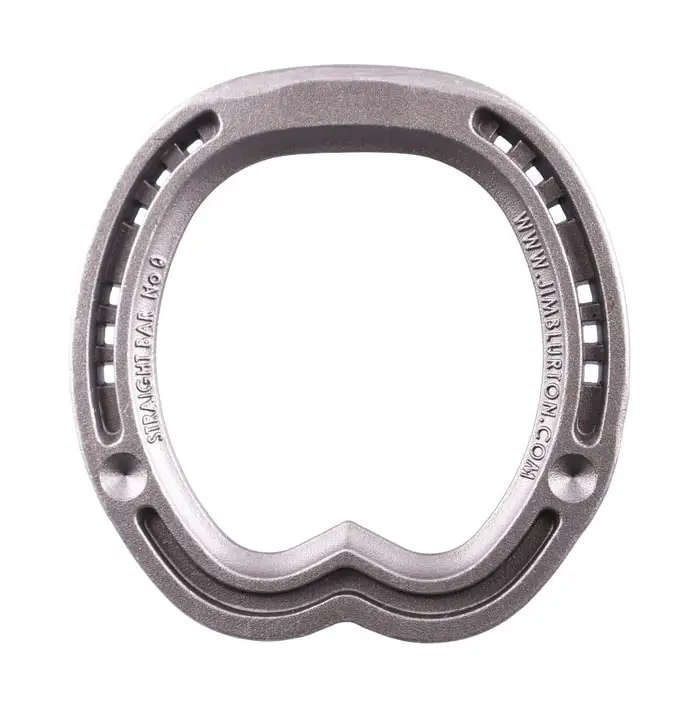
11. Types of Horse Shoes: Round Shoe
The round shoes are designed that the heels of the bar shoe are turned towards each other and welded. Bar shoes are used for contracted heels.
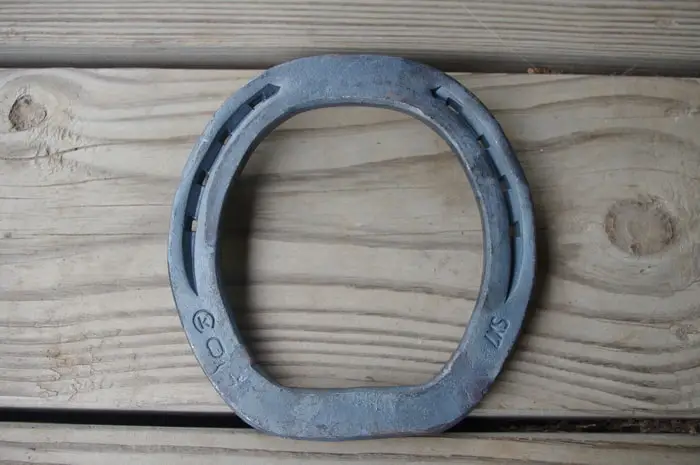
12. Three-Quarter Bar Shoe
Three-quarter bar shoes are the shoe were bar or round shoe with that part of one heel removed which is in contact with corn. Three-quarter bar shoes are good for horses with contracted heels also.
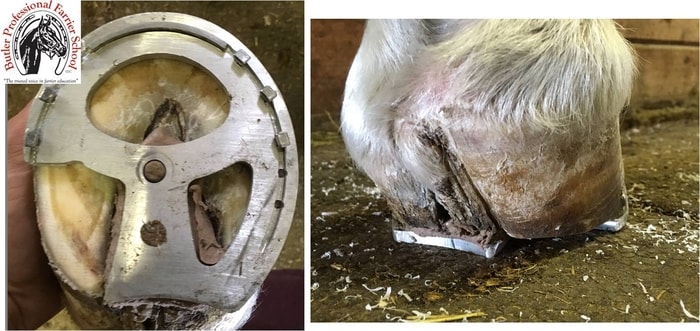
13. Tip Shoe or Half Shoe
The tip or half shoe is made to cover the toe and exterior portion of quarters and bring the frog into bearing. Tip shoes are used for corn cases, capped elbow cases, and pressure the frog.
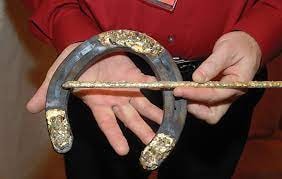
14. Types of Horse Shoes: Convex Shoe
Convex shoes are shoes where the inner edge of the ground surface of the web of the shoe is thicker than the outer edge. Convex shoes are used for horses that wear their shoes abnormally quickly.
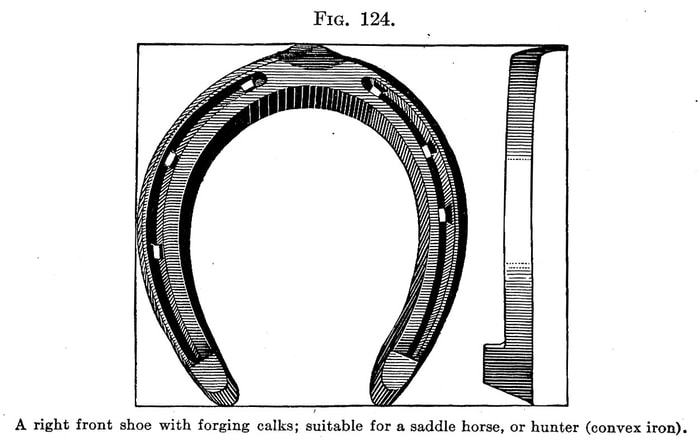
15. Toe Turned-up Shoe
The toes of the fore shoes are sharply set up at an angle of 22 degrees from the center of the web, replacing the clip. The toe-turned-up shoes are used for horses with a stumble.
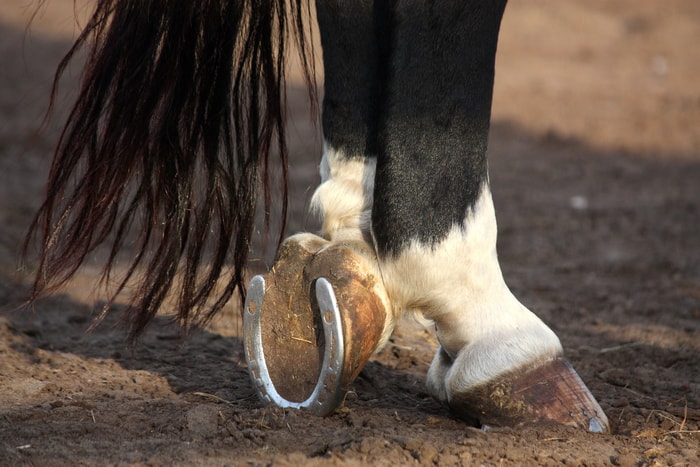
16. Types of Horse Shoes: Rocker Bar Shoe
A Rocker bar shoe is in which the ground surface at the middle of both quarters is thickened and slopes gradually towards toe and heel. Rocker bar shoe is used for horses with laminitis. The horse can throw himself back on his heel as this position affords excellent relief.
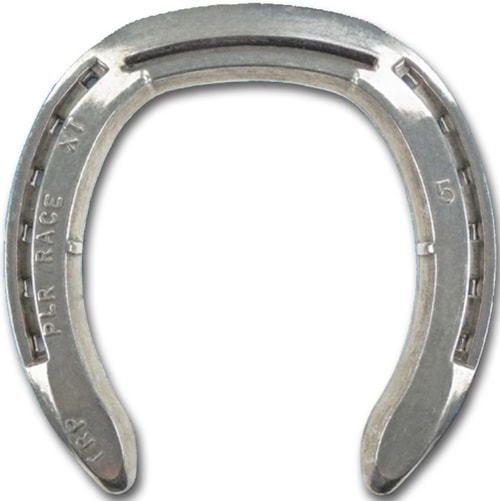
17. High Heeled Bar Shoe
The high-heeled bar shoes are used for severely sprained tendon cases.
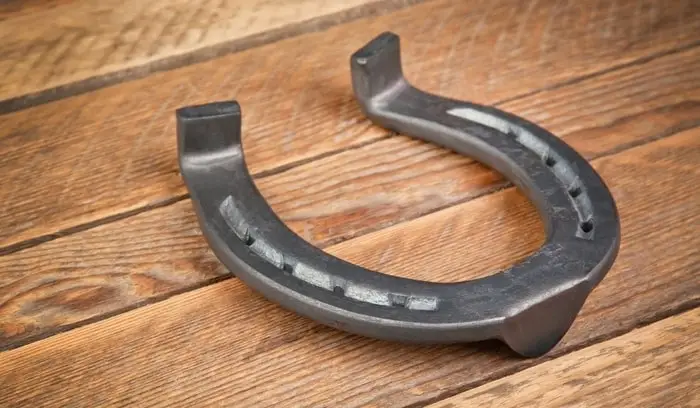
18. Anti-Brushing Shoe
ANti-brushing shoes are special shoes where the inner branch is rasped and comes under the hoof. The shoe is used on the forefoot to prevent brushing.
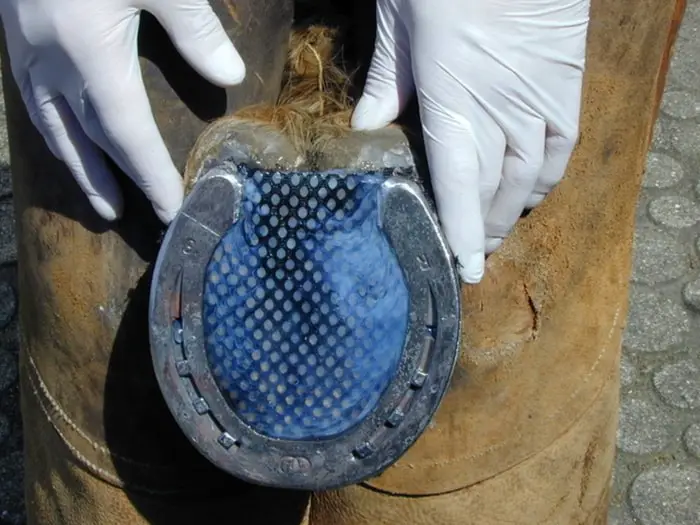
19. Rodway Shoe
Rodway shoe has a double fuller, the outer of which carries the nail holes. There are three ridges on the ground surface, which increase the foothold by breaking the plain surface and collecting grit and small stones in the grooves between them.
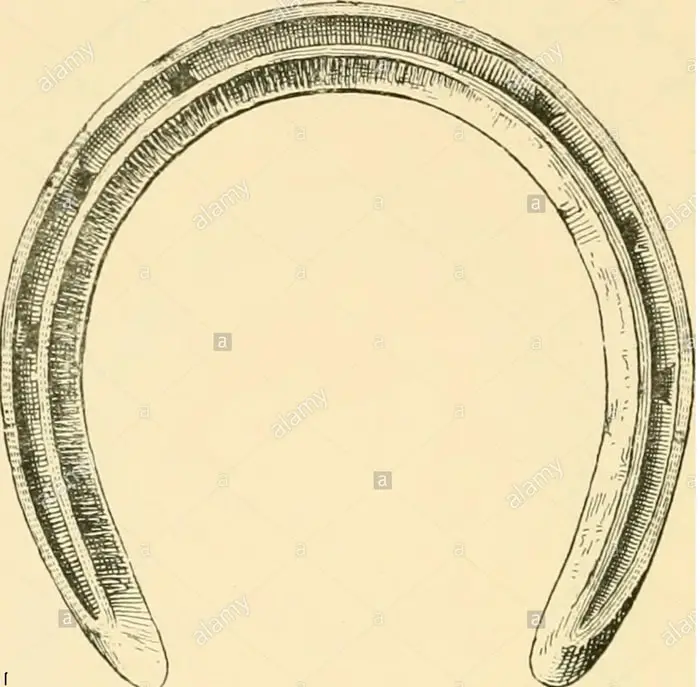
20. Martin Shoe
The martin shoes have a double fuller like the roadway shoe, but the inner groove is more comprehensive, and into this rubber is fixed by beating the rim of the groove inward. Martin shoe is an anti-sleeping shoe.
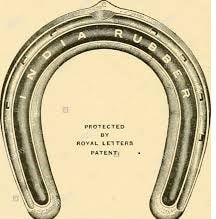
Concluding Remarks on Types of Horse Shoes
There is a proverb that the horse is fit if the feet are fit. The horse foot is an essential part of any type of horse. Horseshoeing is an ancient technique that is used to save the horse feed from adverse conditions. In my article, I have discussed twenty different types of horseshoe. This article will help you to identify different types of horse shoes and their potential uses.